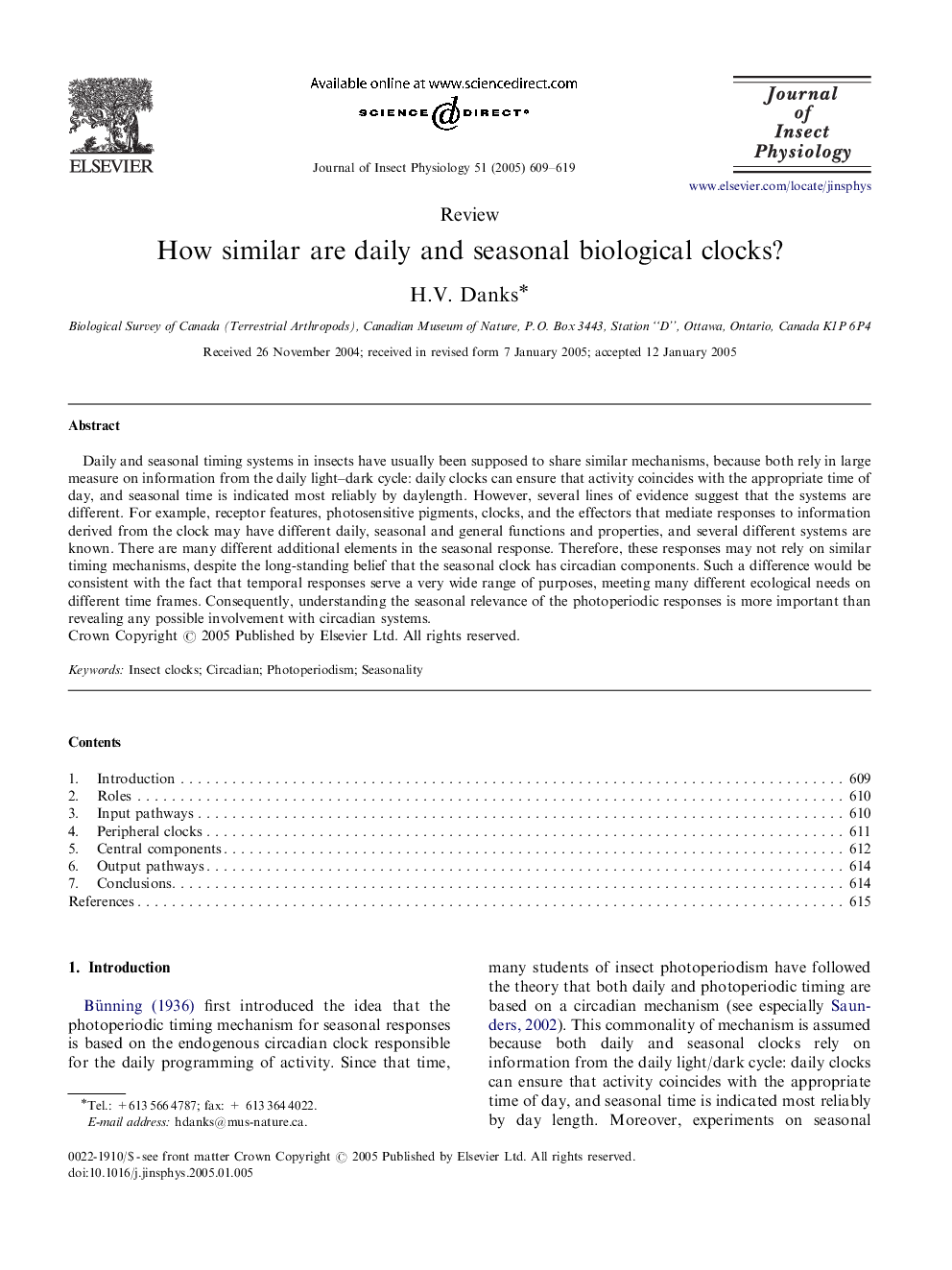| Article ID | Journal | Published Year | Pages | File Type |
|---|---|---|---|---|
| 9147568 | Journal of Insect Physiology | 2005 | 11 Pages |
Abstract
Daily and seasonal timing systems in insects have usually been supposed to share similar mechanisms, because both rely in large measure on information from the daily light-dark cycle: daily clocks can ensure that activity coincides with the appropriate time of day, and seasonal time is indicated most reliably by daylength. However, several lines of evidence suggest that the systems are different. For example, receptor features, photosensitive pigments, clocks, and the effectors that mediate responses to information derived from the clock may have different daily, seasonal and general functions and properties, and several different systems are known. There are many different additional elements in the seasonal response. Therefore, these responses may not rely on similar timing mechanisms, despite the long-standing belief that the seasonal clock has circadian components. Such a difference would be consistent with the fact that temporal responses serve a very wide range of purposes, meeting many different ecological needs on different time frames. Consequently, understanding the seasonal relevance of the photoperiodic responses is more important than revealing any possible involvement with circadian systems.
Keywords
Related Topics
Life Sciences
Agricultural and Biological Sciences
Insect Science
Authors
H.V. Danks,
